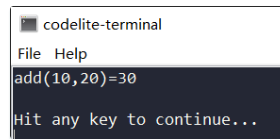函數指針在嵌入式開發(fā)中有著廣泛的應用,它讓代碼更加靈活,減少冗余,提高可擴展性。很多時候,我們需要根據不同的情況動態(tài)調用不同的函數,而函數指針正是實現這一需求的重要工具。本文將介紹六個常見的函數指針應用場景,并結合示例代碼進行講解。
01、回調函數:解耦代碼,提高靈活性
回調函數是嵌入式開發(fā)中最常見的函數指針應用場景之一。它允許我們在函數執(zhí)行過程中,動態(tài)調用用戶定義的函數,從而提高代碼的靈活性。
示例:事件觸發(fā)時執(zhí)行回調函數
#include
void handle_event(int event_type, void (*callback)(void)) {
printf("Event %d occurred\n", event_type);
if (callback) {
callback();
}
}
void callback_function() {
printf("Callback function executed!\n");
}
int main() {
handle_event(1, callback_function); // 觸發(fā)事件1,執(zhí)行回調函數
handle_event(2, NULL); // 觸發(fā)事件2,但沒有回調函數
return 0;
}
在這個例子中,handle_event函數會在事件觸發(fā)時調用callback_function,如果沒有注冊回調函數,就不會執(zhí)行額外操作。
02、函數參數化:讓代碼更加通用有時,我們希望讓一個函數的行為可變,而不是寫死某種邏輯。通過函數指針,我們可以在調用函數時動態(tài)指定不同的處理邏輯,從而提高代碼的復用性。
示例:對數組元素執(zhí)行不同的操作
#include
void process_array(int *array, size_t size, int (*process)(int)) {
for (size_t i = 0; i < size; i++) {
array[i] = process(array[i]);
}
}
int increment(int n) { return n + 1; }
int square(int n) { return n * n; }
int main() {
int array[] = {1, 2, 3, 4, 5};
size_t size = sizeof(array) / sizeof(int);
process_array(array, size, increment); // 對數組執(zhí)行加1操作
process_array(array, size, square); // 對數組執(zhí)行平方操作
for (size_t i = 0; i < size; i++) {
printf("%d ", array[i]);
}
printf("\n");
return 0;
}
通過process_array函數,我們可以選擇對數組執(zhí)行increment或square處理,而不需要寫兩個不同的函數。
03、排序算法:自定義比較規(guī)則
排序是函數指針的典型應用場景,qsort 之所以強大,就在于它可以接收不同的比較函數,從而支持各種排序需求。
示例:升序和降序排序
#include
#include
int compare_asc(const void *a, const void *b) {
return (*(int*)a - *(int*)b);
}
int compare_desc(const void *a, const void *b) {
return (*(int*)b - *(int*)a);
}
void print_array(int *array, size_t size) {
for (size_t i = 0; i < size; i++) {
printf("%d ", array[i]);
}
printf("\n");
}
int main() {
int array[] = {3, 1, 4, 1, 5, 9, 2, 6};
size_t size = sizeof(array) / sizeof(int);
qsort(array, size, sizeof(int), compare_asc);
print_array(array, size);
qsort(array, size, sizeof(int), compare_desc);
print_array(array, size);
return 0;
}
這里通過compare_asc和compare_desc,qsort可以根據傳入的函數指針進行升序或降序排序。
04、函數指針數組:高效選擇不同操作
當我們需要根據不同的輸入執(zhí)行不同的函數時,函數指針數組可以讓代碼更加緊湊、可維護。
示例:使用函數指針數組實現基本計算
#include
void add(int a, int b) { printf("%d + %d = %d\n", a, b, a + b); }
void subtract(int a, int b) { printf("%d - %d = %d\n", a, b, a - b); }
void multiply(int a, int b) { printf("%d * %d = %d\n", a, b, a * b); }
void divide(int a, int b) {
if (b != 0) printf("%d / %d = %d\n", a, b, a / b);
else printf("Cannot divide by zero\n");
}
int main() {
void (*operations[])(int, int) = {add, subtract, multiply, divide};
int a = 10, b = 5;
for (int i = 0; i < 4; i++) {
operations[i](a, b);
}
return 0;
}
這種方法可以避免冗長的switch-case語句,讓代碼更加整潔。
05、回溯法:靈活控制遞歸流程
在回溯算法中,我們經常需要在不同的狀態(tài)下執(zhí)行不同的操作,函數指針可以幫助我們做到這一點。
示例:使用回溯法求數組全排列
#include
void swap(int *a, int *b) {
int tmp = *a;
*a = *b;
*b = tmp;
}
void permute(int *nums, size_t len, size_t depth, void (*callback)(const int *, size_t)) {
if (depth == len) {
callback(nums, len);
return;
}
for (size_t i = depth; i < len; i++) {
swap(&nums[depth], &nums[i]);
permute(nums, len, depth + 1, callback);
swap(&nums[depth], &nums[i]);
}
}
void print_permutation(const int *arr, size_t len) {
for (size_t i = 0; i < len; i++) {
printf("%d ", arr[i]);
}
printf("\n");
}
int main() {
int nums[] = {1, 2, 3};
permute(nums, 3, 0, print_permutation);
return 0;
}
這里的permute通過函數指針callback來決定如何處理排列結果。
在C語言中,我們可以通過函數指針模擬面向對象的多態(tài)特性。
示例:實現“類”的行為
#include
typedef struct {
void (*draw)(void);
} Shape;
void draw_circle() { printf("Drawing a circle\n"); }
void draw_rectangle() { printf("Drawing a rectangle\n"); }
int main() {
Shape circle = {draw_circle};
Shape rectangle = {draw_rectangle};
circle.draw();
rectangle.draw();
return 0;
}
這種方式讓Shape結構體可以在不修改代碼的情況下支持新的圖形類型。
函數指針是C語言中的強大工具,在嵌入式開發(fā)中尤為常見。通過回調函數、參數化函數、排序算法、函數指針數組、回溯法和多態(tài),我們可以讓代碼更加靈活、結構更加清晰。掌握這些用法,能讓你寫出更加高效和可擴展的嵌入式代碼。
-
嵌入式開發(fā)
+關注
關注
18文章
1069瀏覽量
48519 -
函數指針
+關注
關注
2文章
57瀏覽量
3930
發(fā)布評論請先 登錄





 函數指針的六個常見應用場景
函數指針的六個常見應用場景
















評論